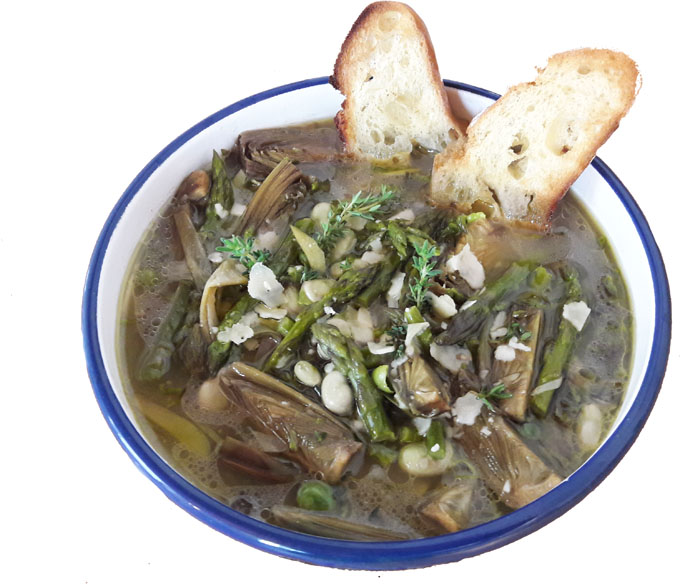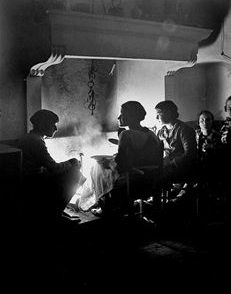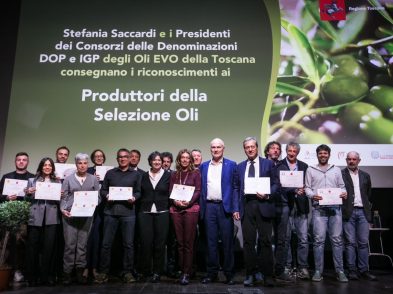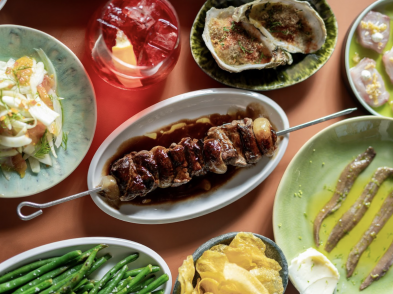Garmugia is a springtime soup from Lucca, traditionally associated with seasonal transition and renewal, much like a variety of Italian specialty soups at this time of the year. Throughout southern Italy, for instance, a soup known as macco di fave made from dried fava beans, peas and herbs is prepared on or around the feast of Saint Joseph on March 19 (hence its other name, macco di San Giuseppe). Similarly, around the town of Teramo in Abruzzo, a dense, hearty soup of beans, peas, grains, vegetables and herbs called le virtù appears in time for calendimaggio, or May Day, an ancient festivity marking the arrival of spring.

Like its counterparts, the principal ingredients of garmugia are those abundant and readily available in spring months. While once this soup might have fallen into the “lean” or “poor” category of la cucina povera dishes, generations of changing tastes and improved economic circumstances have seen the addition of fats and meats. (Garmugia is also said to have been popular with Italian nobles, which could account for the inclusion of meat, items otherwise too dear for peasants and the working classes.) Given its mega dose of nutrients, together with the symbolic association with rebirth and rejuvenation, garmugia has long been considered a dish suited to the sick or convalescing, pregnant women or those about to embark on any particularly challenging task. Its names appears to derive from the Italian word germoglio, meaning “bud” or “sprout” but also “origin” and “beginning”.
Recipes for garmugia vary. The most traditional version uses a simple vegetable broth and includes ground lamb, which is cooked together with the pancetta; another calls for beef stock and ground beef. The recipe here leaves out the ground meat and calls for homemade chicken stock. Any artichoke variety works well as long as they are small and tender, and the asparagus should be fresh and crisp. Spring onions could replace the scallions.
RECIPE
Garmugia
Serves 4
Ingredients
2 scallions
1 cup shelled fresh fava beans (about 150 grams)
1 cup shelled spring peas (about 150 grams)
6 small, tender artichokes
1 bunch young asparagus
3-4 tablespoons olive oil
1 slice of uncured pancetta (about 100 grams)
salt and pepper
3 cups warm chicken stock, preferably homemade (750 ml)
fresh thyme, chopped (optional)
Prepare the vegetables: peel and finely chop the scallions. Shell the beans and peas if necessary. Tear off the outer leaves of the artichokes until you reach the tender under leaves. Trim the stem and tops, then slice the artichokes lengthwise into eighths. Snap off the tough ends of the asparagus. Slice the stalks into approximately 1-inch pieces.
Heat the oil in a large casserole or heavy soup pot. Add the pancetta slice and cook for a few minutes on medium heat. Add the chopped scallions and season lightly with salt and pepper. Cook the scallions in the fat for a few more minutes until softened. Add the artichoke slices and cook for 5 minutes more, stirring occasionally.
Remove the slice of pancetta (optional). Add the beans and peas, stir and cook for a few more minutes, then finally the asparagus pieces and cook for 1 or 2 minutes. Add the warm stock and bring to a simmer. Cook for about 20 minutes. Salt and pepper to taste. Serve with chopped fresh thyme and a slice of grilled bread on top (both optional) with a drizzle of quality olive oil to finish.








